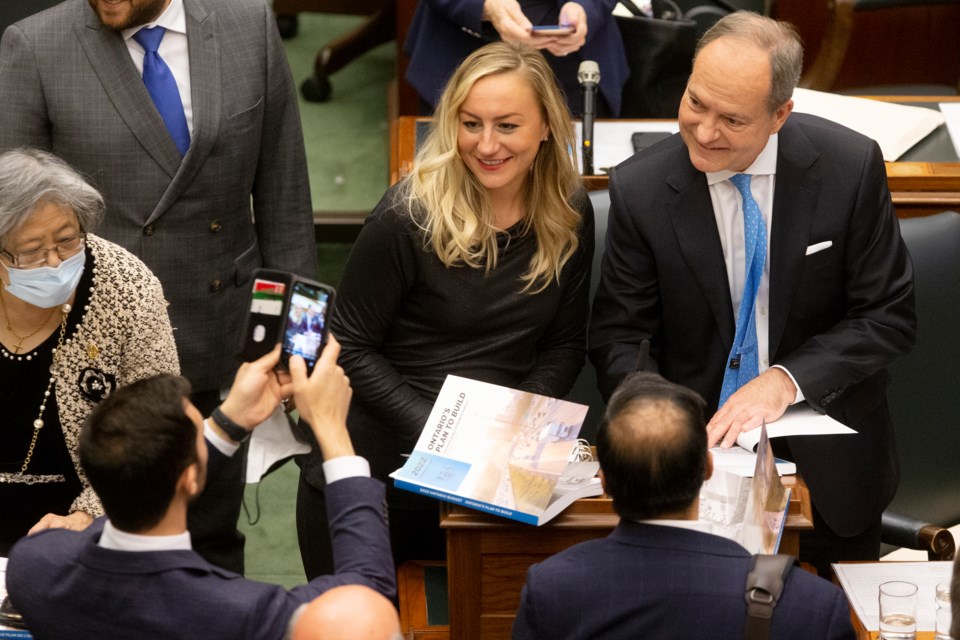A few days before releasing Ontario’s 2024 fiscal plan, Premier Doug Ford and a pair of key ministers teased one of its main themes by announcing his government would be adding more than $1.8 billion in “housing-enabling infrastructure funding.”
On Tuesday, Finance Minister Peter Bethlenfalvy unveiled the government’s budget, titled “Building a Better Ontario.” Gracing its cover is a graphic design featuring a mishmash of the kinds of projects the Progressive Conservatives want to be known for getting done. Throughout the 200 pages behind it, infrastructure — which was set to be mentioned a dozen times by Bethlenfalvy in his speech to tout the budget to the legislature — is a central focus.
In the upcoming fiscal year, the provincial government’s total infrastructure expenditures are projected to be up more than 21 per cent from the $24.1 billion it spent in 2023-24. Of the $29.2 billion that’s projected to be spent in 2024-25 on infrastructure projects, there’s $10.7 billion in expenditures expected on transit, $3.9 billion on highways, $3.6 billion on hospitals, $3.4 billion on schools and other education facilities, $1.4 billion on high-speed internet, and more.
The 2024-25 total is part of what the budget calls “the most ambitious capital plan in the province’s history” — $190.2 billion in planned spending over the next decade.
New funding mechanisms supporting the construction of roads, water infrastructure and more to enable more housing to be built — Ford pre-empted the budget by announcing this last week — are a part of that larger capital spending plan. A total of $1 billion was earmarked for the new Municipal Housing Infrastructure Program, while $825 million was allocated to the Housing-Enabling Water Systems Fund.
A new $200 Community Sport and Recreation Infrastructure Fund, which’ll support upgrades and construction of sporting facilities in the province, was also announced in the 2024 budget.
The budget also mentions the government’s intention to spend $3.3 billion over three years to improve high-speed internet in remote communities.
Although the budget mentions the government plans to spend $27.4 billion over the next 10 years on building roads, highways and bridges, it contains no new information about the projected costs of Highway 413 nor the Bradford Bypass, two projects the Ford government sees as key.
The budget of the Ministry of Infrastructure — which oversees or is involved in many of the provincial government’s biggest infrastructure projects but doesn’t directly fund them — is also set to receive the most significant year-over-year spending increase of any provincial ministry. This increase is largely because of the more than $1 billion that’s being added to what it plans to spend on high-speed internet projects.
The scope of what Infrastructure Minister Kinga Surma is responsible for has also expanded in recent years, including by incorporating the government’s transit-oriented communities program. Her ministry’s base funding will almost double in 2024-25 to $856 million, while its planned spending on municipal infrastructure program investments is seeing a significant bump as well to $672.1 million.




